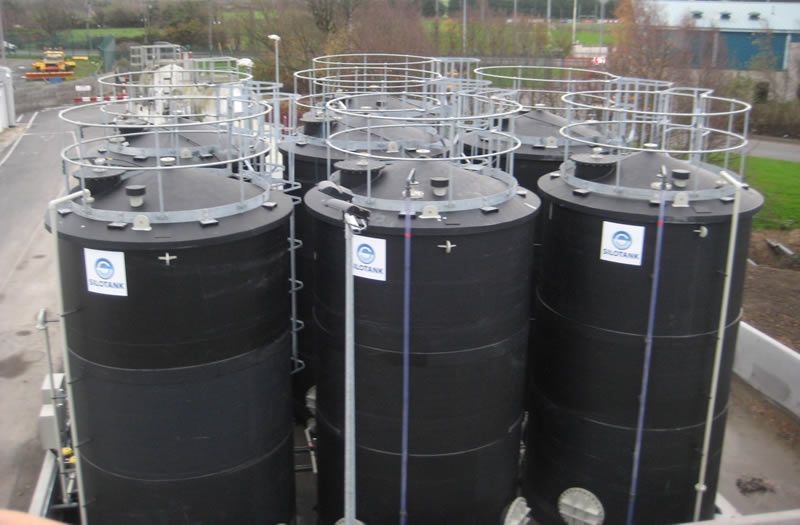Advantages of HDPE-100 Material over Roto Moulded Tanks
One significant difference between PE-100 HD and other polymers, such as linear PE-MD/HD or PE-LLD, lies in their polymer-resin structure. Rota-moulding, the process used for manufacturing tanks, requires low-viscosity resins to facilitate moulding without pressure. Consequently, the material properties of rotationally moulded tanks are limited by the maximum molecular weight possible. On the other hand, HDPE with its higher molecular weight necessitates high-pressure production techniques, allowing for a wider range of molecular structures. This flexibility in structure opens up more possibilities for extrusion or press moulding techniques used in HDPE tanks.
The production process itself also highlights the advantages of HDPE. Rota-moulding relies on low-viscosity polymers, making it impossible to apply pressure during fabrication. This limitation can result in voids in thicker walls due to natural thermal shrinkage. In contrast, HDPE tanks manufactured using extrusion and high-pressure moulding techniques do not encounter such issues, ensuring a more uniform and reliable tank structure.
Designing chemical storage tanks with a known life expectancy is critical for ensuring long-term safety. All plastics subjected to stress will undergo aging over time. Consequently, tanks storing dangerous chemicals must be made from materials with accurately determined aging behavior through long-term testing. PE-100 HD, for instance, has undergone extensive long-term pipe pressure tests in compliance with international standards like ISO/TR 9080. Engineers can confidently design tanks using PE-100 HD with knowledge of its established working life. In contrast, there is a lack of comparable long-term test data available for the polymers used in rota-moulded tanks. Only single-spot hoop tests have been conducted, making it challenging to determine their long-term performance accurately.
Material properties also set HDPE apart. The primary distinction between HDPE used in tank and pipe manufacturing and the polyethylene used in rota-moulding lies in the length of ethylene molecules comprising each material. HDPE used in tanks and pressure pipes has longer molecules, up to six times longer than the polyethylene used in the rota-moulding process. This increased length enables the formation of more "knots and links" between molecules, enhancing toughness, creep resistance, stress cracking resistance, tensile strength, and stiffness.
HDPE also exhibits superior environmental stress cracking resistance (ESCR) compared to resins used in rota-moulding. Corrosive chemicals attack micro-cracks in polymer surfaces over time, and the extent to which this is resisted depends on various factors. Independent tests have shown that PE-100 polymers possess far superior ESC resistance. The standards used to measure ESCR for pipe-grade and rota-moulded polyethylene materials reflect this difference. PE-100 HD requires specimens to sustain a full load of 4MPa for 1000 hours in surfactant at 80°C, while there is currently no standardized requirement for rota-moulded polymers. The limited testing available suggests significantly lower resistance for rota-moulded materials.
Design codes play a vital role in ensuring the safe and reliable design of chemical vessels. DVS 2205 and EN 12573 are internationally accepted design codes for thermoplastic chemical tanks. These codes provide detailed design procedures considering factors like long-term hoop stress, wind-loading, nozzles, manholes, temperature effects, and stress concentration factors. In comparison, rota-moulding design standards offer only limited calculations for determining wall thickness and fail to account for temperature influence, long-term creep, and chemical aging of the polymer due to insufficient data.
The safety of connections is another critical aspect to consider. While most PE pipes and fittings in Europe are manufactured from high-density polyethylene (mostly PE-100), connecting them to rota-moulded polyethylene tanks poses challenges. The common practice of welding HDPE pipe fittings to rota-moulded tank walls has been associated with documented failures. The two materials have different molecular structures, with rota-moulded polymer having much lower melt viscosity. Consequently, these welds are highly susceptible to cracking, especially when exposed to oxidizing chemicals. In contrast, welding HDPE pipe to a PE-100 tank ensures optimum weld strength and a lifespan equivalent to that of the tank since they are made from the same material.
In conclusion, HDPE offers significant advantages for chemical storage tanks compared to other polymers used in rota-moulding. Its higher molecular weight, superior material properties, excellent environmental stress cracking resistance, and compatibility with HDPE pipe connections make it an ideal choice for ensuring the safety and longevity of chemical storage tanks.
- advantagesofhdpeforchemicalstoragetanks













